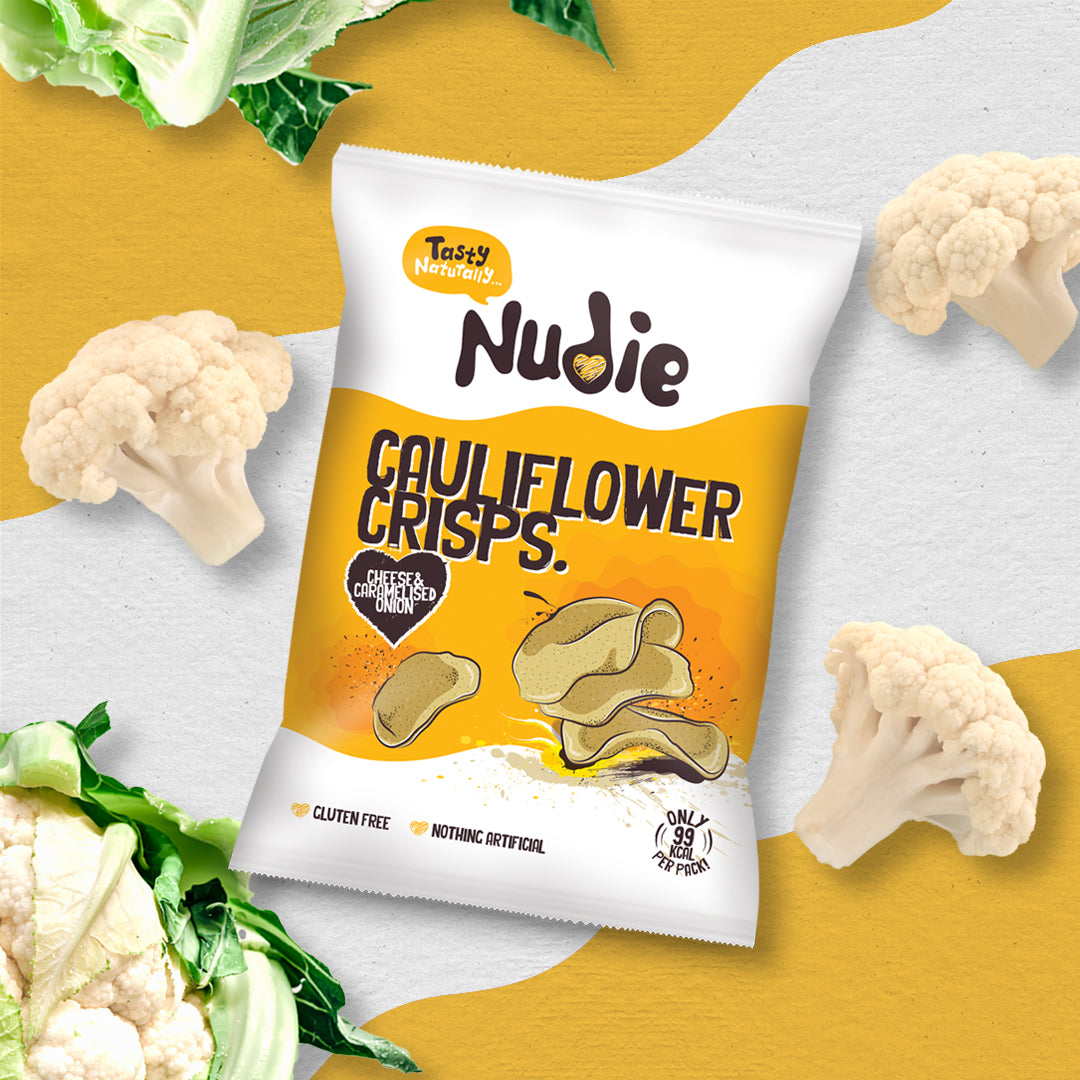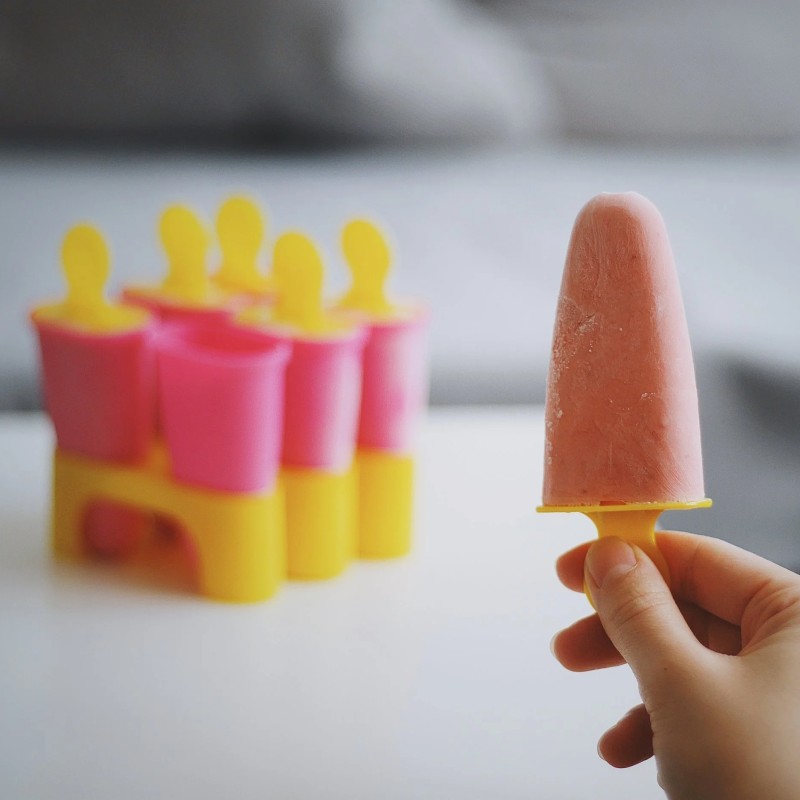How to Look After Your Feet, Naturally
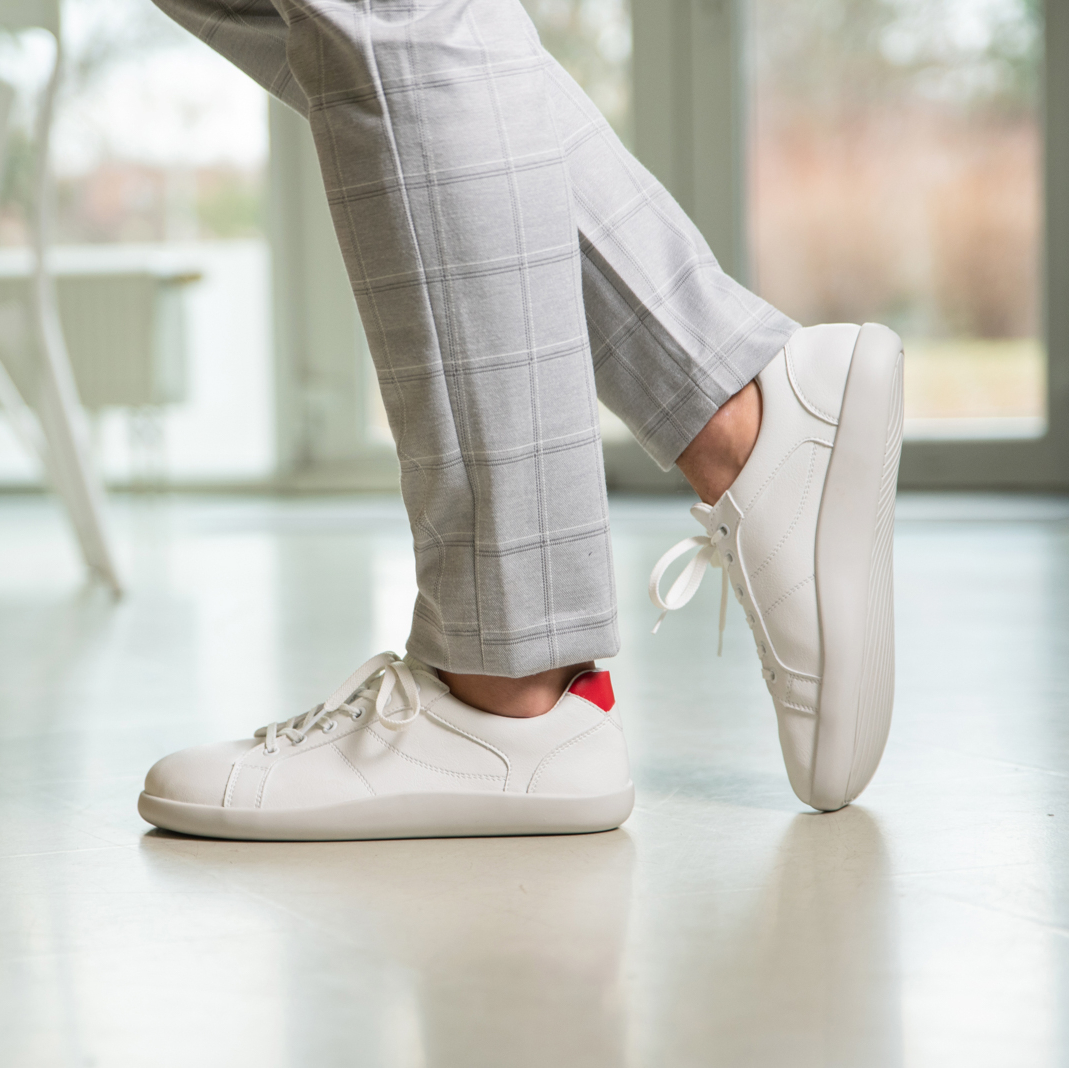
Feet carry us through life, yet they rarely get the care they deserve. From walks in the park to standing at work, our feet work hard every single day. Healthy feet do more than just move us around. They influence posture, balance, and even how we feel at the end of a busy day.
Ahinsa Vegan Shoes (above) are designed by physiotherapists, to ensure good foot health and natural walking.
Daily Natural Foot Care Habits

Look after your feet and they’ll reward you with energy, comfort, and strength. Natural foot care fits easily into any daily routine. All you need is some consistency, the right tools, and a touch of patience.
Avoid essential oils for pregnancy/nursing and affected medical conditions. Avoid shea butter for latex allergies. Wash off cocoa butter before letting pets kiss you!
Washing and Drying Properly
Clean feet start with good washing habits. Water lifts sweat, dirt, and bacteria away, but harsh soaps can strip natural oils. Stick to a gentle, fragrance-free soap.
A simple soak once or twice a week can reduce soreness and soften tough skin. Try warm water with Epsom salts (not for children, pregnancy, heart or kidney conditions), or add a few drops of lavender oil for relaxation. After washing or soaking, dry your feet well – especially between the toes. Damp skin welcomes fungus and bacteria.
For dry cracked heals, skip chemical creams and reach for coconut oil. Warm the oil in your hands and massage it into heels, arches, and balls of your feet before bed. For extra healing, put on clean cotton socks overnight.
Peppermint Foot Cream (made in Buckinghamshire)
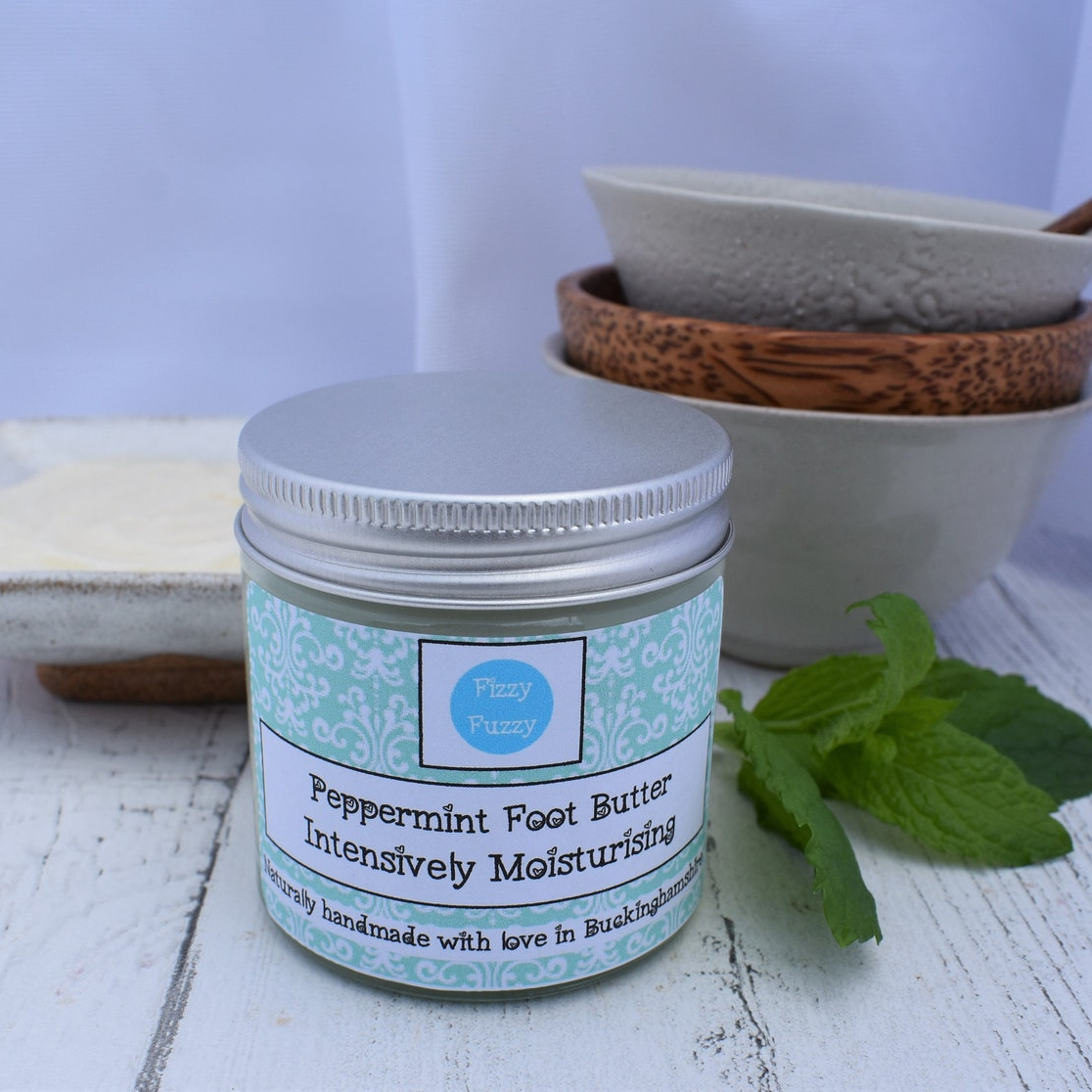
This peppermint foot cream has fabulous reviews, and is made with care in Buckinghamshire, sold in a zero waste glass jar, with metal lid. Made with a blend of jojoba and sweet almond oil, along with mango butter and vitamin E as a natural preservative. And peppermint essential oil.
This intensive foot butter will moisturise dry and tired feet, and is ideal after a day’s walking, a workout or standing in shoes all day at work. Jojoba oil is easily absorbed and mango butter has healing and regenerative properties, and sweet almond oil is packed with vitamins to nourish and protect, and calm skin irritation.
The cream is also not diluted with water (like most foot creams). Ideal for dry cracked heels. So a little goes a long way. Keep the jar away from sunlight.
After 3 days of use, I can feel my dry feet are softening, certainly a small amount goes a long way. Lovely scent.
Nail Care and Avoiding Infections
Healthy toenails are smooth and pale pink. Trim nails straight across – not curved – to avoid ingrown edges. Don’t rush: quick snips cause splits or uneven growth.
Fight fungal infection with apple cider vinegar diluted in water. Dab on with a clean cotton swab if nails look yellow, thick, or crumbly. Allow feet to breathe by skipping nail polish once in a while.
Extra tips:
- Disinfect nail scissors before each use
- Gently clean under nails with a soft brush
- Watch for redness, swelling, or persistent changes
Foot Exercises and Massage
A few minutes of movement boosts both strength and circulation. Simple foot stretches fight stiffness and minor aches. Point and flex your toes, roll your ankles, and massage your arches with a tennis ball or your hands.
Try these daily moves:
- Toe scrunches: Pick up a cloth with your toes
- Ankle circles: Rotate each foot ten times in both directions
- Calf stretches: Hold for 20 seconds with a straight knee
Massage also relaxes the muscles and calms tired feet. Use your thumbs in slow circles around the heels and arch for five minutes before bed.
Choosing the Right Shoes for Healthy Feet
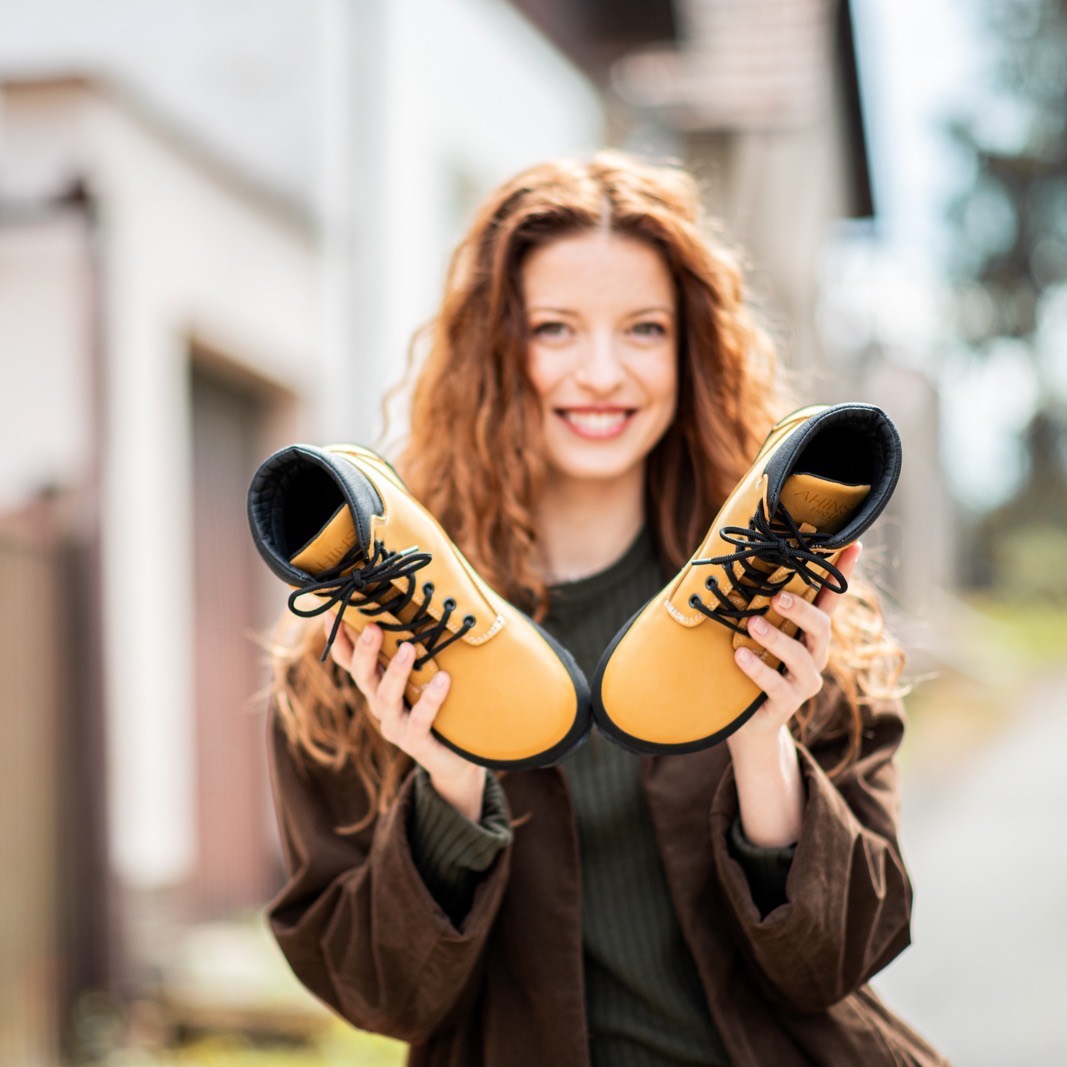
Shoes shape our feet just as much as nature does. Uncomfortable shoes squash, rub, or force feet into unnatural positions, leading to pain and long-term problems. Good shoes support natural movement.
Shoes that pinch or pile pressure on certain points can trigger bunions, blisters, or corns. Flat, unsupportive soles strain tendons. High heels shorten calf muscles. Even trainers can slip if too tight or unsupportive.
Ahinsa Vegan Shoes (designed by Physiotherapists)
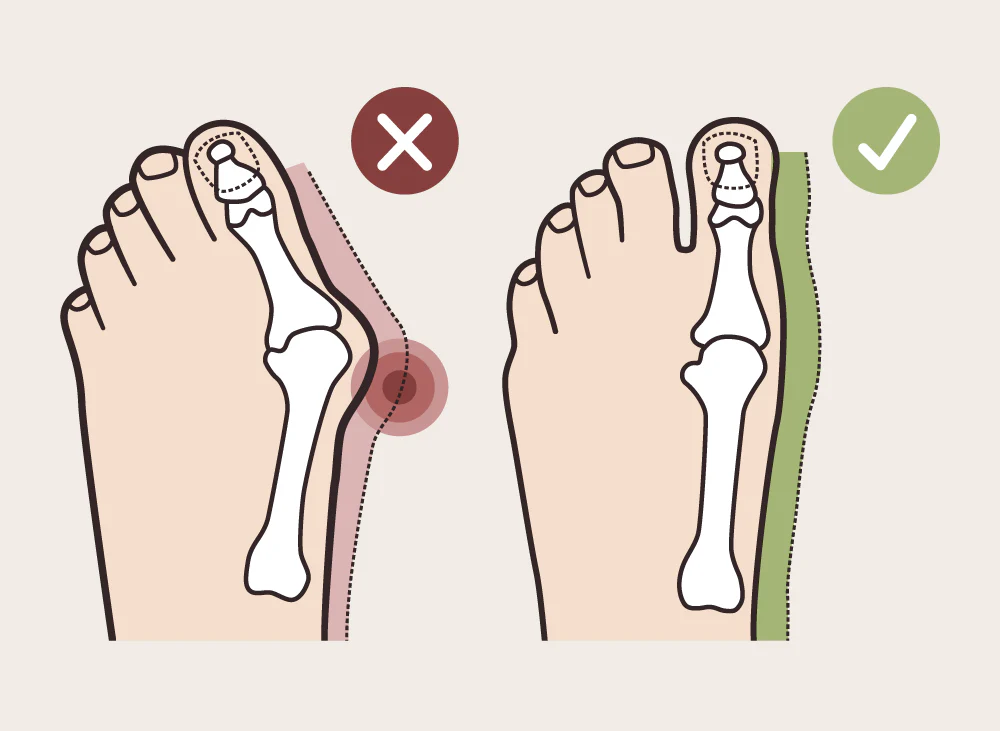
Ahinsa Shoes are are handmade in Croatia and Czech Republic. They look a bit different, but that’s because they have been designed by a physiotherapist, who noticed all his good work was undone, when patients would then stuff their feet into badly-fitting shoes.
Made with quality vegan materials (in styles from shoes to sneakers to sandals and winter boots), these are designed to follow the natural shape of your foot, and to last millions of steps.
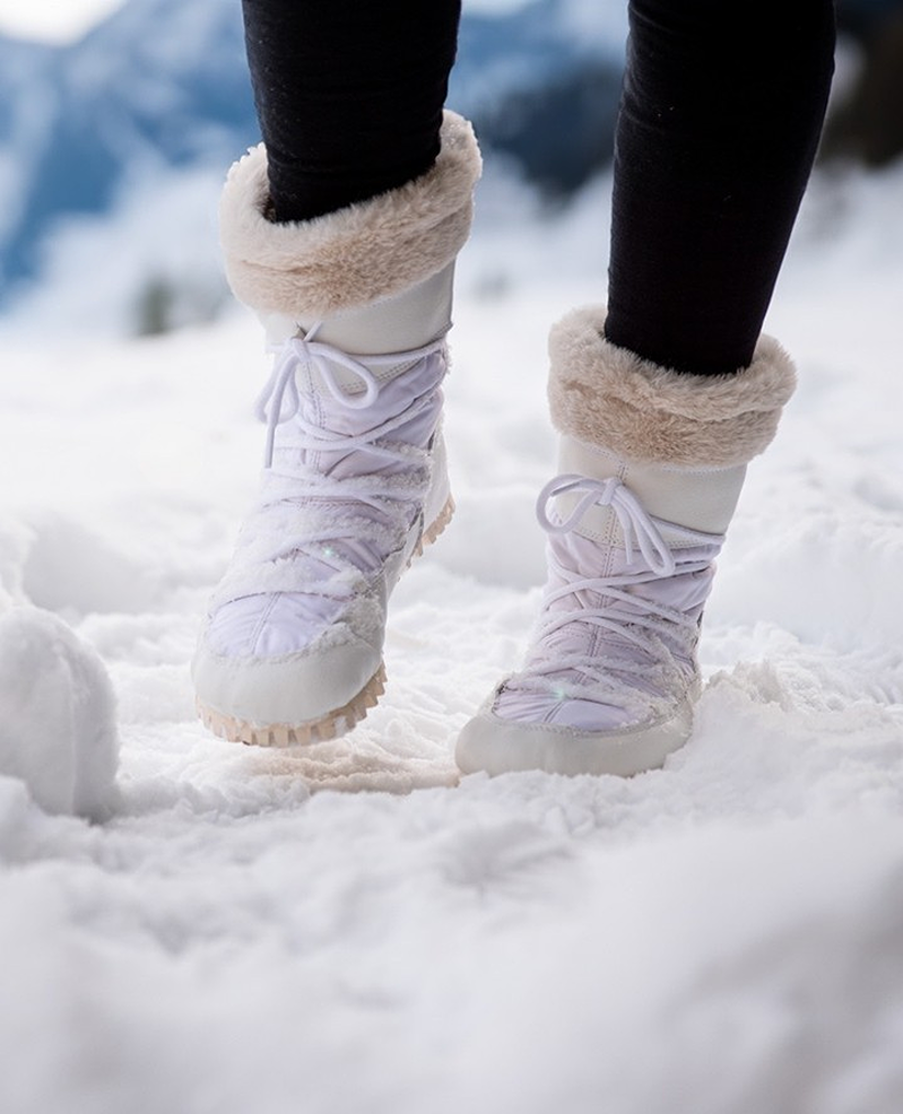
Depending on style, the shoes are in vegan leather or suede (winter shoes), hemp or linen (summer shoes) or winter boots with vegan fur lining to keep your toes toasty (tested in freezing Finnish temperatures!)
Tips for Everyday Shoe Selection
Pick shoes as carefully as you’d pick a mattress or pillow. Support should start at the heel, with a snug but gentle fit around the whole foot.
Shoe shopping checklist:
- Try on new shoes later in the day, as feet swell
- Stand and walk in shoes before buying
- Check for a thumb’s width of space at the tip
- Prioritise breathability and soft materials
- For bunions: Look for extra width and no seams by the big toe
- For blisters: Seek smooth linings and flexible uppers
- For flat feet: Find gentle but firm arch support
Work shoes should cushion and stabilise. Exercise shoes need shock absorption and flexibility. For leisure, let your feet relax in lightweight, open styles.
Solutions for Common Foot Problems
Some issues need just a few tweaks, others call for medical help. Here’s a cheat sheet for natural foot fixes:
- Bunions (wear wide shoes and toe spacers, do foot exercises above). Seek help for severe pain or rapid growth.
- Corns & Calluses (use a pumice stone and foot oil, and wear roomy shoes. Seek help for bleeding, infection or if you have diabetes.
- Blisters (clean with saline, cover loosely and avoid popping). Seek help for signs of infection.
- Ingrown toenails (use warm salt water soaks, and lift edge with clean cotton). Seek head for spreading redness or pus.
- Cracked heels (daily oil, soft socks and gentle exfoliation). Seek help for deep cracks and ongoing pain).
- Nail infections (diluted cider vinegar, keep nails short). Seek help if they spread or there is no improvement).
- Tendinitis (rest, ice, gentle stretching). Seek help for persistent swelling/pain.
- Gout (stay hydrated, avoid rich foods, try cherry juice). Get a copy of The Vegan 8 cookbook (these recipes helped to heal the author’s husband’s gout). No oil or gluten, but she is really talented, so the meals taste great! Seek help for high fever or severe attacks.
Diabetes and Special Foot Considerations
Diabetes reduces feeling and blood flow in the feet, so even tiny injuries can turn serious (and even lead to amputation). Inspect your feet daily for cuts, redness, or swelling.
Safe habits for diabetic foot care:
- Wash and dry feet gently every day
- Moisturise, but skip between the toes
- Don’t walk barefoot – even indoors
- Wear seamless socks and well-fitted shoes
- See a foot specialist at least once a year
Stopping smoking is very important, as is checking water temperatures when bathing (people with diabetes sometimes can’t feel hot or cold). Read more tips to prevent diabetes.
A BOOK TO TAKE CARE OF YOUR FEET
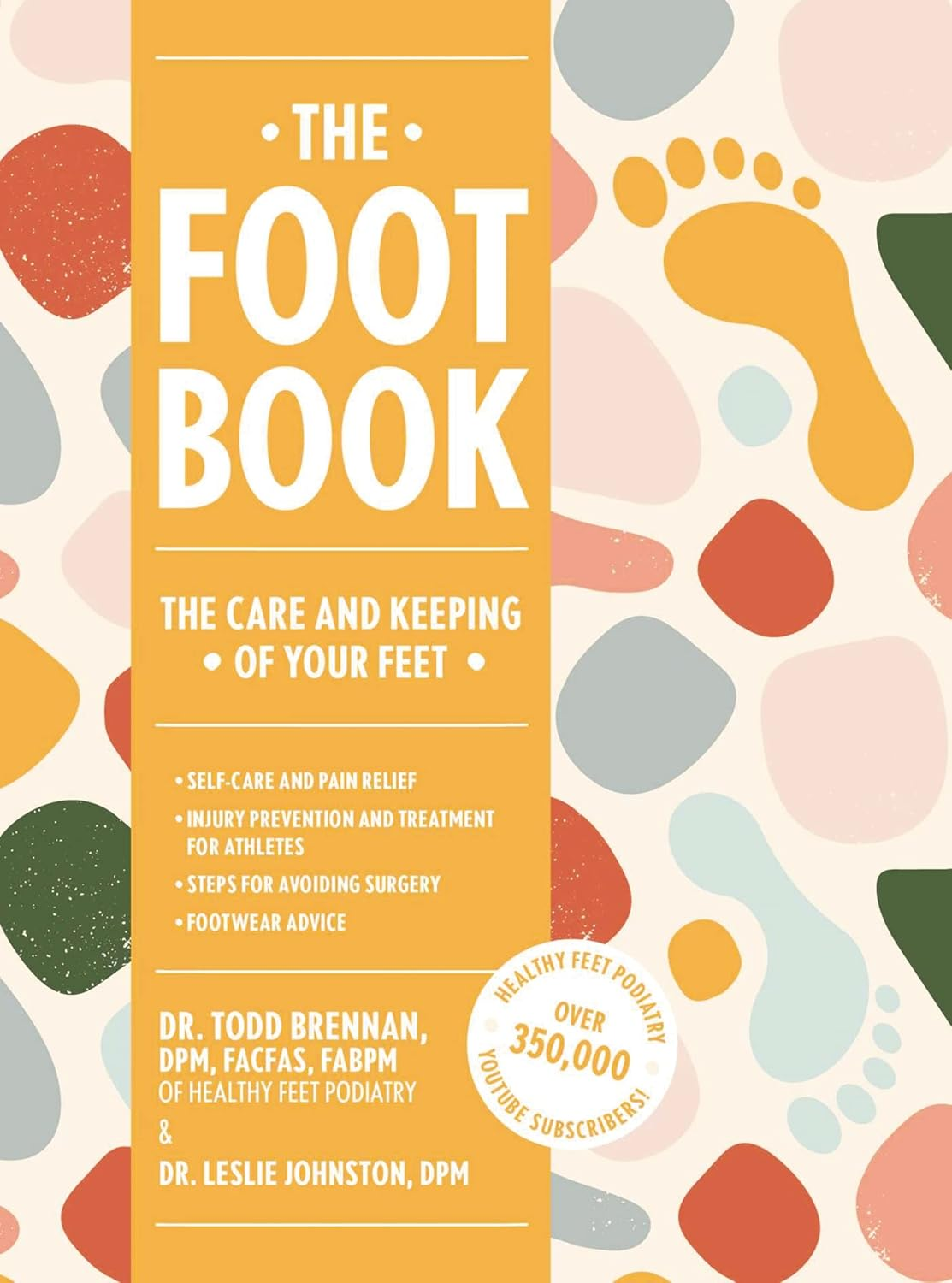
The Foot Book is the ultimate guide to taking care of your feet, penned by two highly-trained (podiatrists). It explains how our feet (and walking) works. Learn how to prevent and heal common foot problems in adults and children.
It also will save you money on buying remedies that don’t work. For instance, the authors explain that bunions are a ‘bony problem’, so spending money on soft tissue splints won’t work.
It also has tips and help for:
- Hammertoe
- Corns & Calluses
- Nail & Foot Fungus
- Ingrown toenails
- Ball of Foot Pain
- Gout
- Warts
- Lumps, Bumps & Masses
- Heel Pain
- Flat Feet & High Arches
- Arch Pain
- Achilles Tendinitis
- Arthritis
- Child Foot Pain
- Sports Injuries
- Skin Cancers
- Diabetes & Feet
Fun Facts About Animal Feet

- Rhinos have very dainty feet, considering their huge size. So to avoid weight-bearing pressure, they walk on their tippy-toes!
- Elephants’ pads act like shock absorbers, letting these giants walk softly
- Cats walk on their toes for balance and silent hunting.
- Geckos have toe pads covered in tiny hairs that let them scale walls and even hang upside down. They also have sticky feet to walk up walls, just like Spiderman!
- Camels walk on wide, leathery pads that stop them from sinking in sand.
- Blue-footed booby birds have white bodies, but bright blue feet. The males use these to show and attract a mate, by showing their feet to the females. Whoever has the brightest blue feet – gets the girl!

